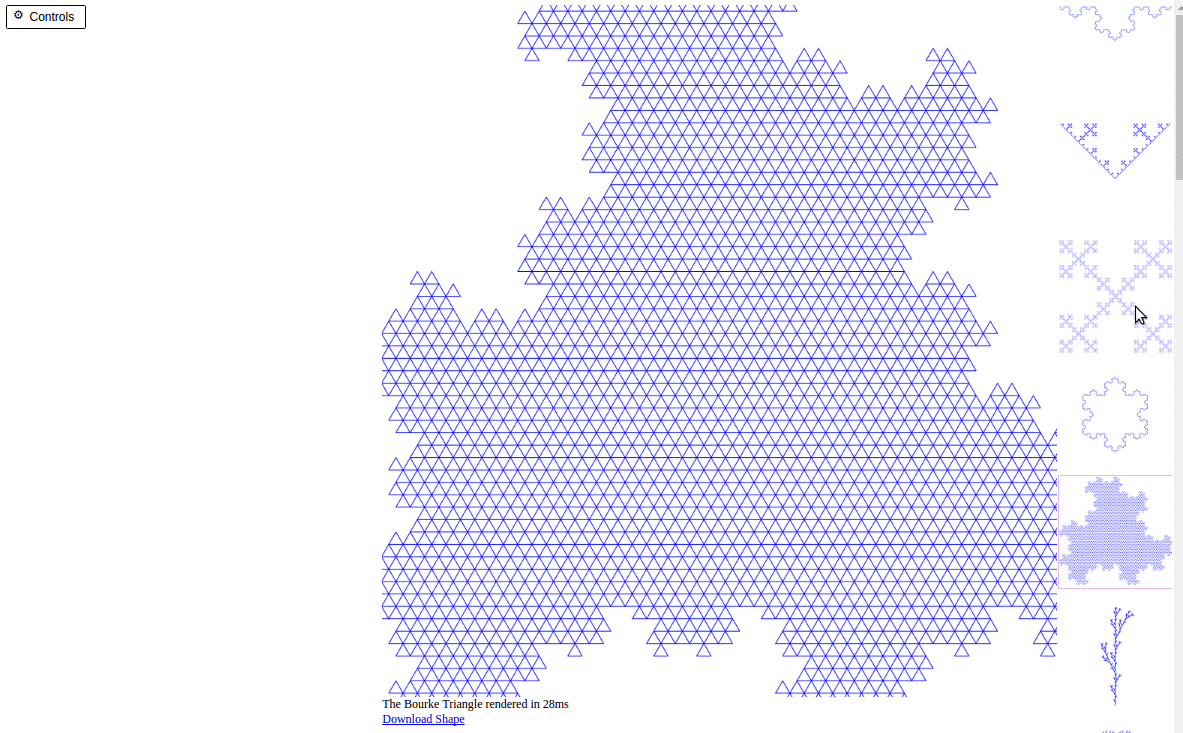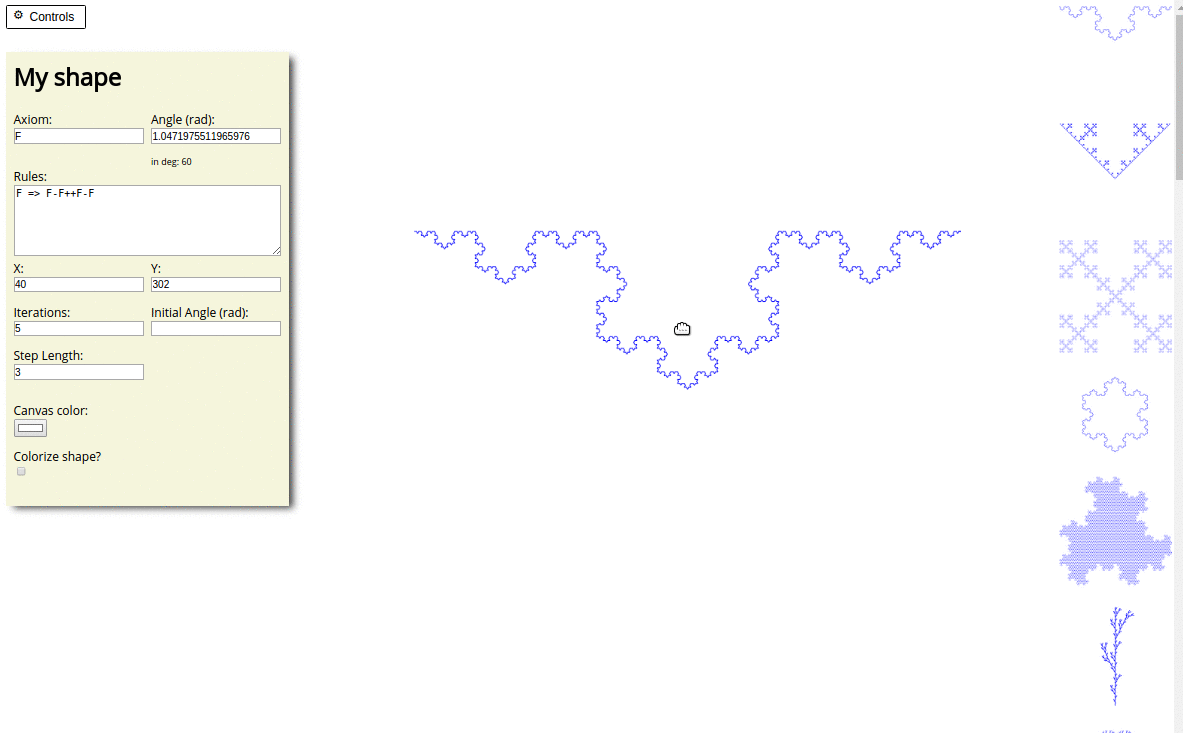L Systems Generator
This is a little project I’ve made betveen switching from working in one company to another. Now I realise, that maybe I’m a bit obsessed with fractals. But anyway, I like what I’ve done.
If you are lazy to read - click on a link and explore for yourself!
So hurray, an L-System fractal generator. What is L-systen? according to Wikipedia, L-system or Lindenmayer system is a parallel rewriting system and a type of formal grammar. An L-system consists of an alphabet of symbols that can be used to make strings, a collection of production rules that expand each symbol into some larger string of symbols, an initial “axiom” string from which to begin construction, and a mechanism for translating the generated strings into geometric structures. L-systems were introduced and developed in 1968 by Aristid Lindenmayer, a Hungarian theoretical biologist and botanist at the University of Utrecht. Lindenmayer used L-systems to describe the behaviour of plant cells and to model the growth processes of plant development. L-systems have also been used to model the morphology of a variety of organisms and can be used to generate self-similar fractals such as iterated function systems.
In normal words, for example if you have axiom ‘F’ and the rule is only one and it’s F → F+F−F−F+F, on a first iteration you have
F next it’s
F+F−F−F+Fand next (all F’s now F+F−F−F+F)
F+F−F−F+F + F+F−F−F+F − F+F−F−F+F − F+F−F−F+F + F+F−F−F+Fand if F is a line in the plane, ‘-‘ change direction 90 gegrees counter - clockwise, ‘+’ 90 degrees clockwise you’ll have a simpliest fractal named Koch Line:

Really simple!
The core of code is a object LShape, which have a step method:
Lshape.prototype.step = function() {
const arrState = this.currentState.split('')
const nextStepArr = arrState.map(el => {
let res = el
if (this.rules[el]) {
return (res = this.rules[el])
}
return res
})
this.currentState = nextStepArr.join('')
}Of course, there is a canvas dracing functions and so on, you can look at them at the source code, the code is stupidly simple. But you can have a lot of fun playing with this:
There is a 40+ shapes to start with:

And, of course, all kinds of customization is awailable! Change axiom, rules, n of iterations, color, anything, and then save your work!

Unfortinately, now the project is not optimized for mobile. PR’s very very welcome!